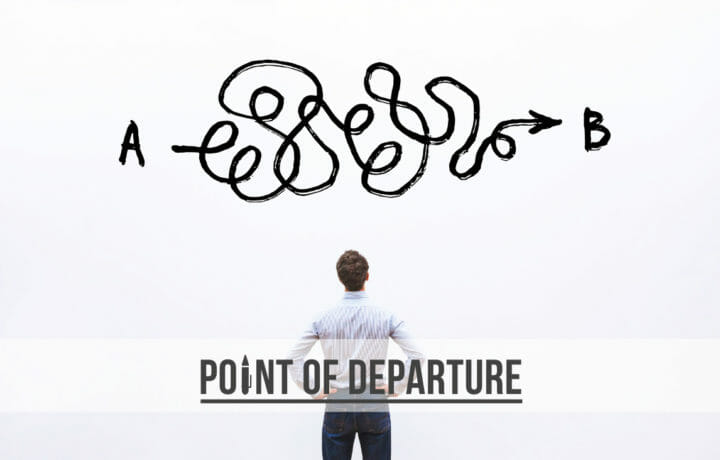“If I had an hour to solve a problem, I’d spend 55 minutes thinking about the problem and five minutes thinking about solutions.” – Albert Einstein
Simplicity is a principle of war for a reason.
I say that phrase a lot. Probably too much, honestly. Early on during my time as a planner and strategist, it became a cautionary mantra when someone’s grand schemes became unnecessarily complicated or when a plan’s inflexibility made success increasingly unlikely. “Keep it simple, stupid” just lacked the nuance needed to make the point stick; it was too cliché.
The phrase served me well over a career in uniform. Everyone had at least a passing awareness of the principles of war. Drop those nine simple words in the midst of a planning exercise, and people took notice. It opened a door to a conversation that allowed everyone to step back and reexamine the solution we were trying to find. Because that’s what it really came down to: finding a solution to a problem.
However, that mantra doesn’t work with every audience. Not everyone has read Sun Tzu. More people than you would think don’t know Clausewitz from Santa Claus. Mention Occam’s razor in the wrong setting and people might assume you have a different problem. That doesn’t mean the same challenges don’t exist; you just have to approach them differently.
Overcoming those challenges still begins with a mantra of sorts, just one focused on asking the right questions. Those questions – the same questions you would ask in any setting – are often assumed away in the rush to find a suitable problem for the solution someone is pushing. That makes asking those questions all the more important.
WHAT PROBLEM ARE YOU TRYING TO SOLVE?
As obvious at it might seem, problem solving begins with knowing what problem you’re trying to solve. It’s not complicated – it’s simply problem framing. But in seven years of teaching strategy, planning, and problem-solving at the graduate and undergraduate levels, I have yet to find a textbook that begins with this simple exercise. In fact, most educational efforts proceed from the assumption – usually mistaken – that the problem has already been identified.
As a former boss of mine was fond of saying, “We’re really good at solving problems. What we’re not so good at is solving the right problems.” As a result, he would often begin a briefing by asking, “What problem are you trying to solve?” If the briefer couldn’t answer the question, that inevitably led to a short discussion on problem framing. If the briefer could answer the question, that often resulted in a few more questions. “Are you really solving a problem, or is this just a solution in search of a problem?” “Is this a significant problem, or a minor issue that can be resolved without a lot of effort?” And so on.
It’s not just that you’re solving a problem, it’s that you’re solving the right problem. You have to be certain that you’ve identified the problem correctly – that you’re just treating the symptoms – and that everyone recognizes the problem as well. That way, before you launch the organization into a major problem-solving effort, you can be sure the juice is worth the squeeze.
WHAT DOES RIGHT LOOK LIKE?
Assuming that you’ve identified the right problem to solve, what does right look like once you’ve solved the problem? Having a broad vision is only the beginning. You need to evolve that vision to another level altogether, defining in detail the effects achieved once the problem is solved.
In her 2008 bestselling book, Tell Me How this Ends, author Linda Robinson asked that very question of General David Petraeus, then the commander of coalition forces in Iraq. In the midst of the Surge, with violence peaking across the beleaguered country, it was a fair question. It was the right question. It was the only question. Petraeus knew all too well what problem he was trying to solve, and he had a crystal-clear definition of what right looked like. Getting there was going to be the challenge.
I recently had a conversation over coffee with a colleague who was charged with leading a major change effort for his organization. As we chatted about the challenge ahead, he was completely taken aback when I asked, “When you get to the end of the road, what does right look like?” “What do you mean?” he asked. “Just that,” I responded. “When you’ve finally solved the problem, what will the impact be?” The blank look on his face told me all that I needed to know. He had no idea. He was focused on the task at hand – which had been assigned to him, not defined – and hadn’t considered anything beyond that.
HOW DO YOU GET THERE FROM HERE?
The third and final question brings the point home: “How do you get there from here?” Few people take the time to define the problem they’re trying to solve. Fewer still bother to ask themselves what right looks like when they’ve solved the problem. One of the reasons why we’re so good at solving the wrong problems is because we’re even better at assuming away the framing required to solve the right problems.
Assuming that you’ve taken the steps to properly frame the problem and define the outcomes of your solution, getting to that solution requires a road map. This is typically when one of two things occur – either the road map is unnecessarily complicated and leaves you lost and frustrated, or it fails to account for complexities along the way and never gets you where you want to go. Ideally, you want as direct a path to what right looks like as possible. What will it take to get you there, how much time will it require, and where can you expect to encounter obstacles?
Problem solving doesn’t have to be difficult. Remember, simplicity is a principle of war for a reason.




